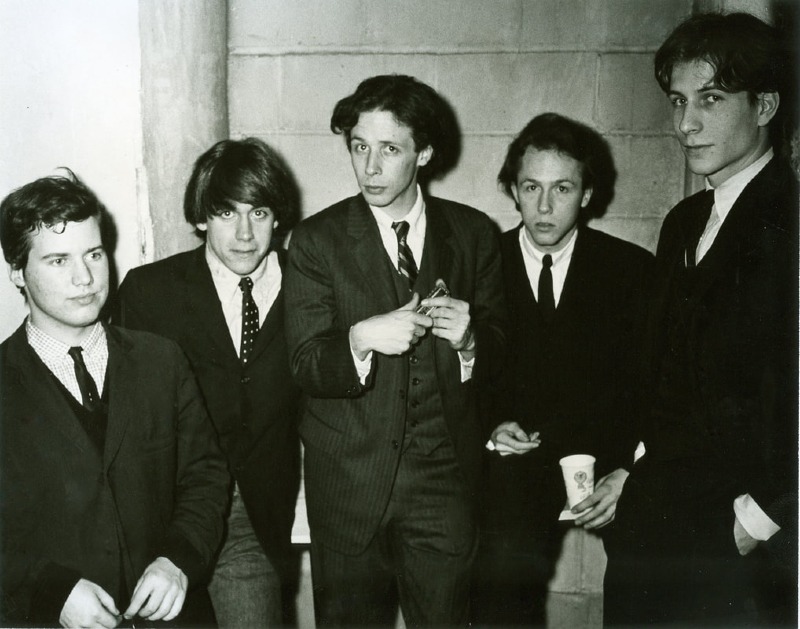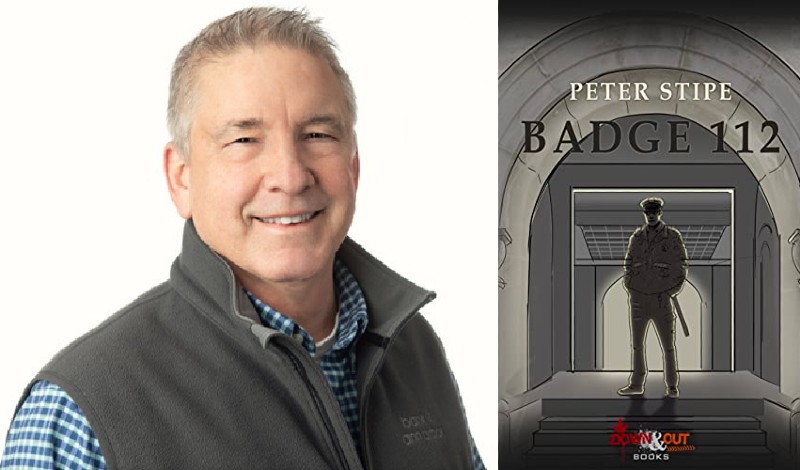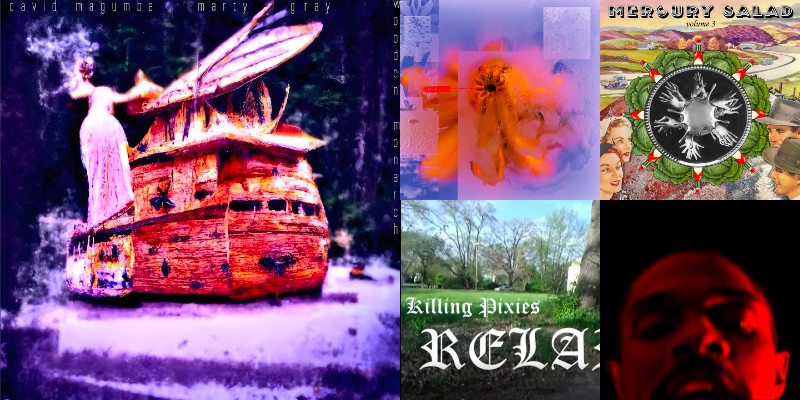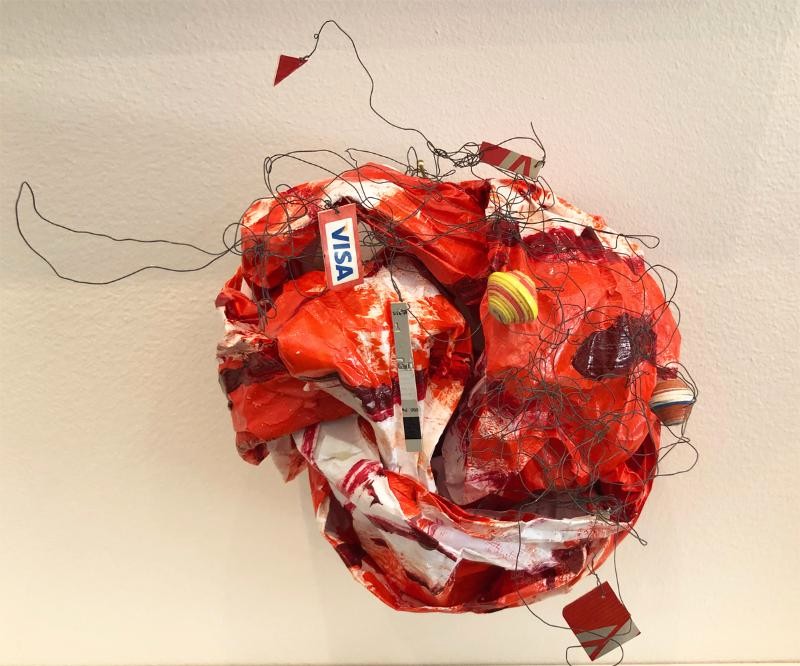Prime Times: Michael Erlewine on The Prime Movers Blues Band, Iggy Pop, and Ann Arbor in the 1960s

Though they never released a record in their heyday or topped a concert bill outside their hometown, The Prime Movers were unquestionably one of Ann Arbor’s most important bands of the 1960s.
While some 38 musicians would eventually rotate through the group, its core lineup came to include drummer James Osterberg, christened “Iggy” by the band; keyboardist Robert Sheff, later famed as the avant-garde composer “Blue” Gene Tyranny; guitarist Daniel Erlewine, known today as one of the world’s top luthiers; and vocalist/harmonica player Michael Erlewine, who would go on to found the All Music Guide, All Movie Guide, and a host of spinoffs.
One of the first white American bands to devote themselves to Chicago-style blues when originators like Muddy Waters and Howlin’ Wolf were still in their prime, the group was regularly on the bill at Ann Arbor’s Canterbury House, Clint’s Club, Mother’s, The Ark, The Schwaben Inn, The Fifth Dimension, and The Depot House. The Prime Movers also appeared at Detroit’s Grande Ballroom and Living End, and even the Fillmore and Matrix in San Francisco. But their devotion to the blues led them to turn down an offer to sign with Motown and split with manager/A-Square Records founder Jeep Holland, who sought to force them into a pop-rock mold. As a result, The Prime Movers’ powerful sound became just a fading memory to those lucky enough to hear them in person.
But stashed away in the basement of Michael and Daniel Erlewine’s brother Stephen were well-recorded tapes of the group in action at Clint’s Club and The Schwaben Inn. In 2008 a track appeared on the Ace/Big Beat compilation A2 (Of Course), then a 45 rpm single was released by Third Man.
Finally, in late 2019, Sundazed Records’ Modern Harmonic imprint issued a full 10-track CD and two-LP set of The Prime Movers' work. Highlighted by the stabbing, string-bending guitar leads of Dan Erlewine and the soulful organ of Robert Sheff, the 1966-7 recordings also feature the future Iggy Pop singing their Yardbirds-style cover of “I’m a Man,” which reveals more than a hint of what was to come two years later in The Stooges.
I spoke with Michael Erlewine about the band’s history and the recent release of their music, more than 50 years after it was recorded.
Friday Five: Halfright, Grandmaster Masese, Jeevan Angelo, Seaholm, Jevon Alexander

Friday Five highlights music by Washtenaw County-associated artists and labels.
This week features a pop mini-album by Halfright (ex-Kelseys), Kenyan folk music and stories by Grandmaster Masese, hip-hop by Jeevan Angelo and Jevon Alexander, and a pop-punk video by Seaholm.
Late-Night Journals: Former Ann Arbor police officer Peter Stipe recalls 18 years on the force in his memoir "Badge 112"

For almost 20 years, Peter Stipe served as a police officer in Ann Arbor. After getting off work late at night, “I would be amped up, go home, and write it all down,” he says. “I wrote a lot of profiles of people at work and their personality quirks.”
The result of all that late-night journaling is now Stipe's memoir, Badge 112.
The idea for putting this writing into a book came from a police inspector Stipe met while visiting his stepbrother: “After hearing me tell stories about my days on the job, he said that I should write a book.”
Stipe began by posting his stories on Facebook.
“I did my test drive there,” he says. “It helped me to figure out how long the stories should be, if I was grabbing people at the beginning, giving a satisfying payoff, and so on.”
He also had people from a variety of backgrounds proofread the material so as “not to err on any sensitive issues.”
Badge 112 is a series of vignettes that allows the reader to drop in and drop out of the book wherever they choose, and Stipe composed his prose in a way inspired by the memoirs of a famous actor.
“David Niven wrote some books about his Hollywood adventures … as a witness to what was going on around him, not as the main character," Stipe says. "I tried to model my writing on that to tell what happened as I witnessed it.”
University of Michigan lecturer Jennifer Sperry Steinorth experimented with an erasure project, which became “Her Read: A Graphic Poem”

On the pages of Her Read: A Graphic Poem, author Jennifer Sperry Steinorth finds the imp, ocean, mother, pain, love, religion, and womxn. This book of erasure poetry simultaneously works as a graphic poem with artwork from the original text “radically altered” to make new visuals and word art. The source text, which is The Meaning of Art by Herbert Read, is obscured to varying degrees, sometimes visible very faintly under paint or Wite-Out while at other times incorporated into original artwork.
Pages and lines take on new shapes as the poem is conjured from the existing words and letters. Early on, the poet describes an outlook, noting:
An Ode for the Anthem: Mark Clague’s “O Say Can You Hear? A Cultural Biography of the Star-Spangled Banner”

It seemed a little on the nose to be reading U-M associate professor Mark Clague’s new book, O Say Can You Hear? A Cultural Biography of the Star-Spangled Banner, on the 4th of July—at U-M’s Camp Michigania, no less—but that’s nonetheless when and where I absorbed enough national anthem-themed information to sweep an entire Jeopardy! category.
Indeed, to say Clague is thorough in his research would be a gross understatement.
Friday Five: David Magumba, Placid Angles, Killing Pixies, Sonny Dulphi, Mercury Salad

Friday Five highlights music by Washtenaw County-associated artists and labels.
This week features jazz-influenced R&B by David Magumba, '90s-esque electronic pop via John Beltran's Placid Angles pseudonym, a pop-punk video by Killing Pixies, the latest single and video by hip-hop artist Sonny Dulphi, and the multi-genre adult pop of Mercury Salad.
The Pleasure Principle: The characters in Lydia Conklin’s short story collection, “Rainbow Rainbow,” seek gratification and identity

Characters in Lydia Conklin’s Rainbow Rainbow perch on the precipice of something—a decision, a change, the start or end of a relationship, or even the dangerous cliff above a quarry where people swim and occasionally fatally fall.
Each story in this collection probes personal boundaries and desires to see how far the characters will stretch and when they will run in another direction. Queer, trans, and gender-nonconforming identities inform these stories as well as the book title, which is not only the name one of the story but also an Easter egg in one of the other tales, which reveals the meaning of the appellation Rainbow Rainbow.
Conklin is the Helen Zell Visiting Professor in Fiction at the University of Michigan and they will be an assistant professor of fiction at Vanderbilt University this fall.
Throughout the large—and small—turning points the characters face, they seek out their own needs and endure the pain of loss or the fulfillment gained. When distance grows between lesbian partners living in Wyoming, one of them grasps the extent to which their connection has deteriorated because the other was secretly pursuing her passion. On recognizing the shift, the narrator shares, “The words sent a crack of pain down my neck. We’d drifted so far apart. I’d failed to recognize creative euphoria in my own partner, living beside me in the middle of nowhere for three months. What was wrong with me?”
The beginning of the end had already begun.
Portraits in Motion: Joel Swanson's "People and Other Living Things" at 22 North Gallery

Right: Joel Swanson, Walt, 27”x48, 2019, 10-minute 4k video. Photo by K.A. Letts.
In his first solo gallery show, People and Other Living Things, Joel Swanson brings his considerable powers of observation—honed by years as a research microbiologist—to the examination of his fellow human beings.
On view weekends throughout the month of July 2022 at 22 North Gallery in Ypsilanti, the exhibit is a mix of several bodies of his work that may, on the surface, seem unrelated yet reflect different aspects of Swanson’s interest both in what can be seen by the naked eye and in what lies beneath the reach of our physical perceptions.
Swanson says in his artist’s statement:
Friday Five: Djangophonique, Seaholm, Dre Dav, Von Siwel, DÆmons

Friday Five highlights music by Washtenaw County-associated artists and labels.
This week features hot-club jazz from Djangophonique, pop-punk by Seaholm, hip-hop via Dre Dav, R&B (and more) from Von Siwel, and prog-metal by DÆmons.
Bits & Pieces: "The Small Details: Amy Sacksteder and Brenda Singletary" conjure meaning through assemblages at U-M's Institute for the Humanities Gallery

It all adds up in The Small Details, a two-person exhibition on view now through July 29 at the Institute for the Humanities Gallery in Ann Arbor.
Through accretion, addition, and accumulation Amy Sacksteder and Brenda Singletary conjure meaning from bits and pieces—ceramic and glass shards, wire, photos—assembling personal narratives that are highly specific in their material, but universal in their intent.


































